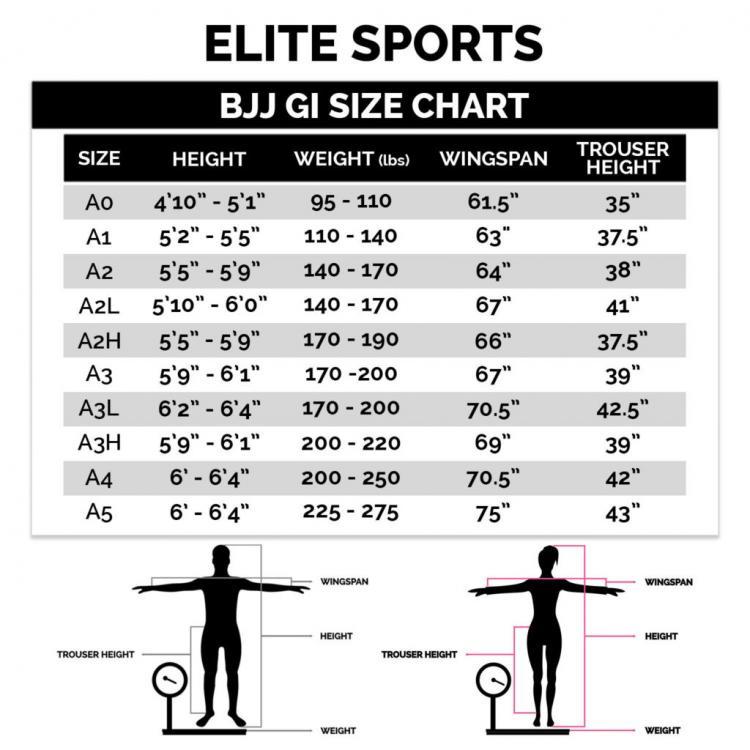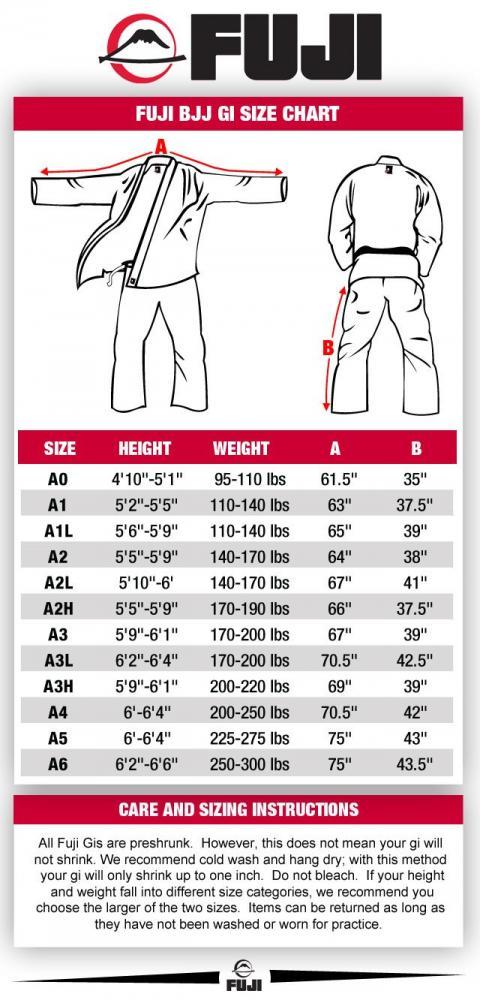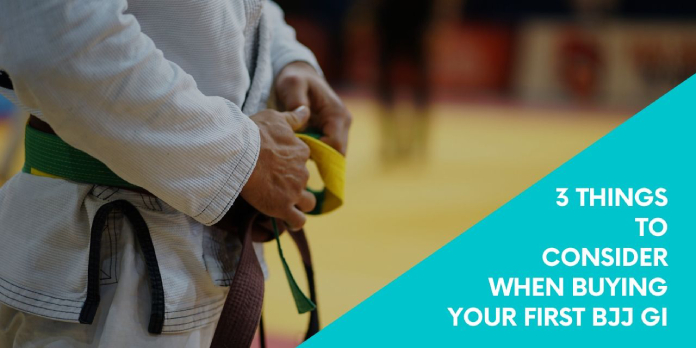You’ve had a taste, been hooked and now you’ve decided to embark on your BJJ journey. Good for you. All you need now is the uniform– the gi. You need something that will hold up to all those future hours spent on the mat drilling and sparring, while making you look good.
Figuring out what gets you the most bang for your buck can be tricky, and there are as many opinions as there are gis, but don’t worry, we’ve got you sorted. In this article, we talk about 3 important things to consider before buying your first gi.
More...
A quick history lesson: Most commonly referred to as the gi - the Keikogi (稽古着), or dōgi (道着)– was introduced in Japan in the late 19th century by the founder of Judo, Jigoro Kano. When the Mitsuyo Maeda brought Jiu Jitsu to Brazil and introducedthe Gracies to the martial art, the gi was introduced as part of the art – and consequently become an integral part of BJJ.
These sturdy uniforms come in a variety of weave types, thicknesses, colors and weights. Depending on you preferences, build and location, some types may be more suitable for you than others. BJJ gis are slightly different from the gis used in Judo, with the BJJ gis being slimmer, more fitted and usually significantly more ornamented.

Before diving into brands and colors, there are a few things to consider in terms of material, weight and cut.
1. Weave:

Gis come in a variety of weaves. The weave indicates the specific woven pattern, the thickness and the weight of the gi. As a rule of thumb the thicker the weave the more durable, warmer and heavier the gi will be, while thinner weaves generally mean it will be cheaper, lighter and more breathable.
While many companies have begun to introduce weave-types that are brand specific, the most common types of weaves for gi jackets are:
Single Weave
The single weave is the lightest of the traditionally woven gi jackets. It’s made with less fabric than the other weave types, as it’s woven only once, hence the name. The light weave also makes it more breathable, making it a favorite in warmer climates. Therefore, if you’re regularly competing, a light single weave jacket might be that little extra, which helps you squeeze into that lower weight class. Average sized single weave gis weigh between 3.9 lbs (1.8 kg) and 5.7 lbs (2.6 kg). However, the lightness and breathability comes at the cost of durability, and single weave gi tends to have a shorter lifespan than its heavier counterparts. The single weave gi jackets are typically cheaper than the heavier gi jackets.
Pros:
- Lightweight
- Breathable
- Cheaper
Cons:
- Less durable
- Easy to grip
Double Weave
A heavier and sturdier jacket, the double weave is – you guessed it – woven twice. You’ll find the double weave jackets to be harder for your teammates to grip and if you hang dry it, it’ll feel like armor. Usually slightly more expensive than the single weave, double weaves generally have good durability and a long lifespan.
Pros:
- Durable
- Long lifespan
- Hard to grip
Cons:
- Heavy
- Expensive
Gold Weave
A blend of the single and double, the gold weave is often advertised to have the durability of the double weave, while being as light as the single weave. However, a more realistic description is that it’s the middle ground. It gets you a bit of both worlds, breathability and durability, but shorter lifespan than the double and not as lightweight as the single.
Pros:
- Medium durability
- Medium lifespan
- Breathable
Cons:
- Easy to grip
- Expensive
Pearl Weave
Combining the single and the gold weave, the pearl weave is a lightweight hybrid. A popular choice for competitors, many competition gis are pearl weaves, as they are lightweight, but can hold up to the stress of competition sparring. Typically pearl weave jackes are distinguishable by the tiny pearls in the woven fabric.
Pros:
- Suitable for competition
- Lightweight
- Breathable
Cons:
- Easy to grip
- Expensive
Ripstop or Cotton
Pants in BJJ generally come in two sorts: cotton or ripstop. The cotton pants are similar to those in other fighting arts, but usually with an added patch of fabric on the knees. They generally have good durability, but are heavier and subject to shrinkage.
Ripstop pants are usually a nylon blend that’s woven in a crosshatch pattern, which should make them lighter, but still durable and less prone to rips and tears.
Other weave types
There are a range of other weave types, some variations on the thickness, weave pattern and weight, while others are defined by the fabric type. These include bamboo weave, hemp weave, ripstop weave, honeycomb weave and platinum weave etc. However, the vast majority of weaves, that you’ll encounter will be ones covered above.
2. Colors
There’s an abundance of colorway options for BJJ gis. From camouflage, to multicolored, to gis so patched out they resemble NASCAR driver’s outfits, the styles and colorways will let you express your personality through your choice of gi. But before you rush out and buy that gi you’ve been eyeing, there are a few things to consider.
While some gyms have a very relaxed policy in regards to gi colors, patches and patterns, other gyms enforce stricter policies. Traditionally in Judo only white and blue gis are allowed. Many BJJ gyms have decided to adopt similar uniform policies, typically allowing blue, white or black gis. The biggest federation in BJJ, the IBJJF, also only allows these three colors for gis in competition.
So although you want to sport that funky camouflage gi, you may want to check what your gym’s uniform policy is and then consider if you’re going to compete regularly, before you go spend all your savings on it.
3. Sizing
There are a few brands that cater specifically to certain body-types (e.g. Lanky Fight Gear), but these days most brands have sizes and cuts for almost all body-types.
However, sizing for BJJ gis can be a little tricky if you haven’t encountered it before. Rather than the S, M and L denominations, BJJ gis use a system with the letter A (for Adult) alongside a number to indicate size. A0 is typically the smallest size, while on the end of the spectrum we find the biggest with A6. Sizes may vary a little bit by the brand, but will generally look like this below. Below are the size charts of Elite Sports and Fuji, two of the more popular gi brands.


In recent years some brands have added a few letters to the gi sizing to accommodate various body types. These cuts usually come in H for the husky and broader body type, L for the rangier, lanky body type, and F for the slimmer and more fitted cut.
So for example if you’re a slimmer lankier individual, that usually uses medium sizes, then an A2L or A3L may be a good fit for you.
These days most brands tend to be fairly close in sizing and cuts, but there are still deviations in the fittings of the different designs. So if you’re ever in doubt about which size to use, it’s always best to consult the specific brand’s
sizing chart.




